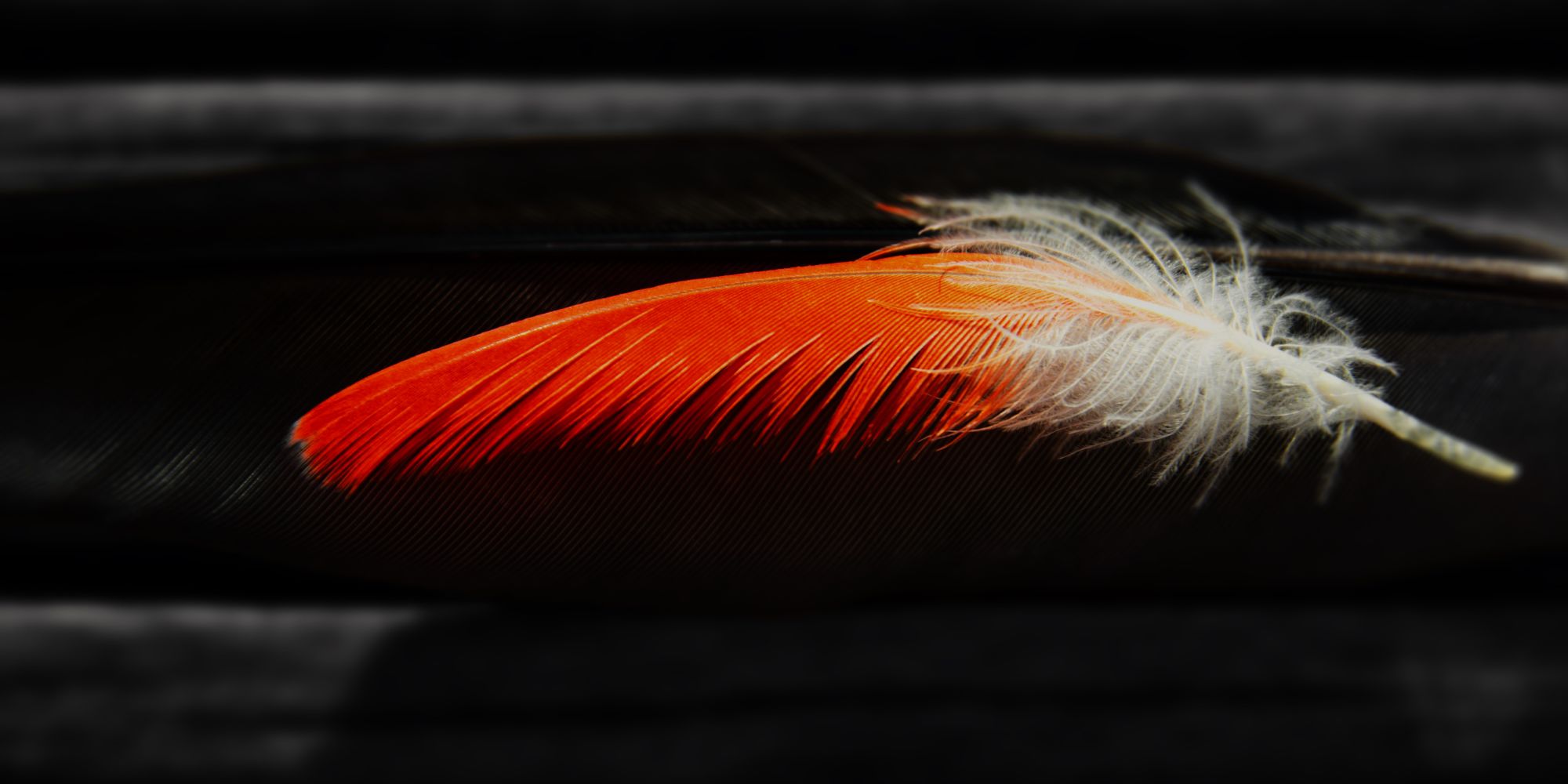
Running Commentary 5/12/2025
Hello,
I am afraid that I must admit something up front this week: I did not watch the latest episodes of Andor. I’m afraid there were just too many birds to see in the past week.
Well, actually it was mainly due to the fact that I’m not just watching Andor by myself, so coordinating viewing around both Mothers’ Day and, yes, several birding excursions was not really possible. I did catch the new BattleBots fights, which I go over below.
But the good news is that I did see quite a lot of great birds during the 2025 May Big Day, and over the past week generally. I finally found a blue-gray gnatcatcher while on a Mothers’ Day picnic (actually, my mom found it for me, I just ID’d it), I watched an ovenbird bob along the ground for a few minutes without if flying away, and I got the first look at a scarlet tanager I’ve gotten in years. Full details of my weekend can be found here.
But the big prize was getting to see a brown pelican on Wednesday. One got very lost and came to Michigan, and I and about a hundred other people went out to see it. This is a very rare bird that, at time of writing, is still being reported at Lake Lansing; hopefully it can find its way back home to the ocean soon, since we don’t really have the right fish for it here, I don’t think.
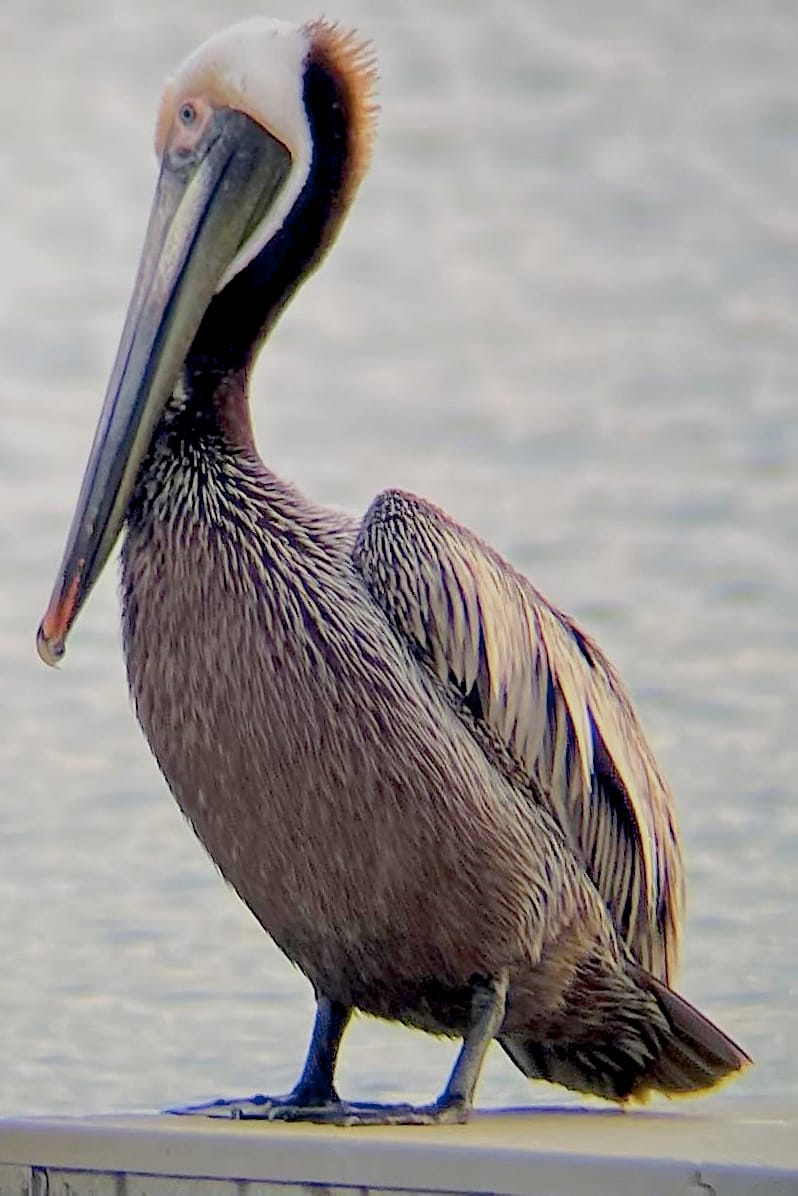
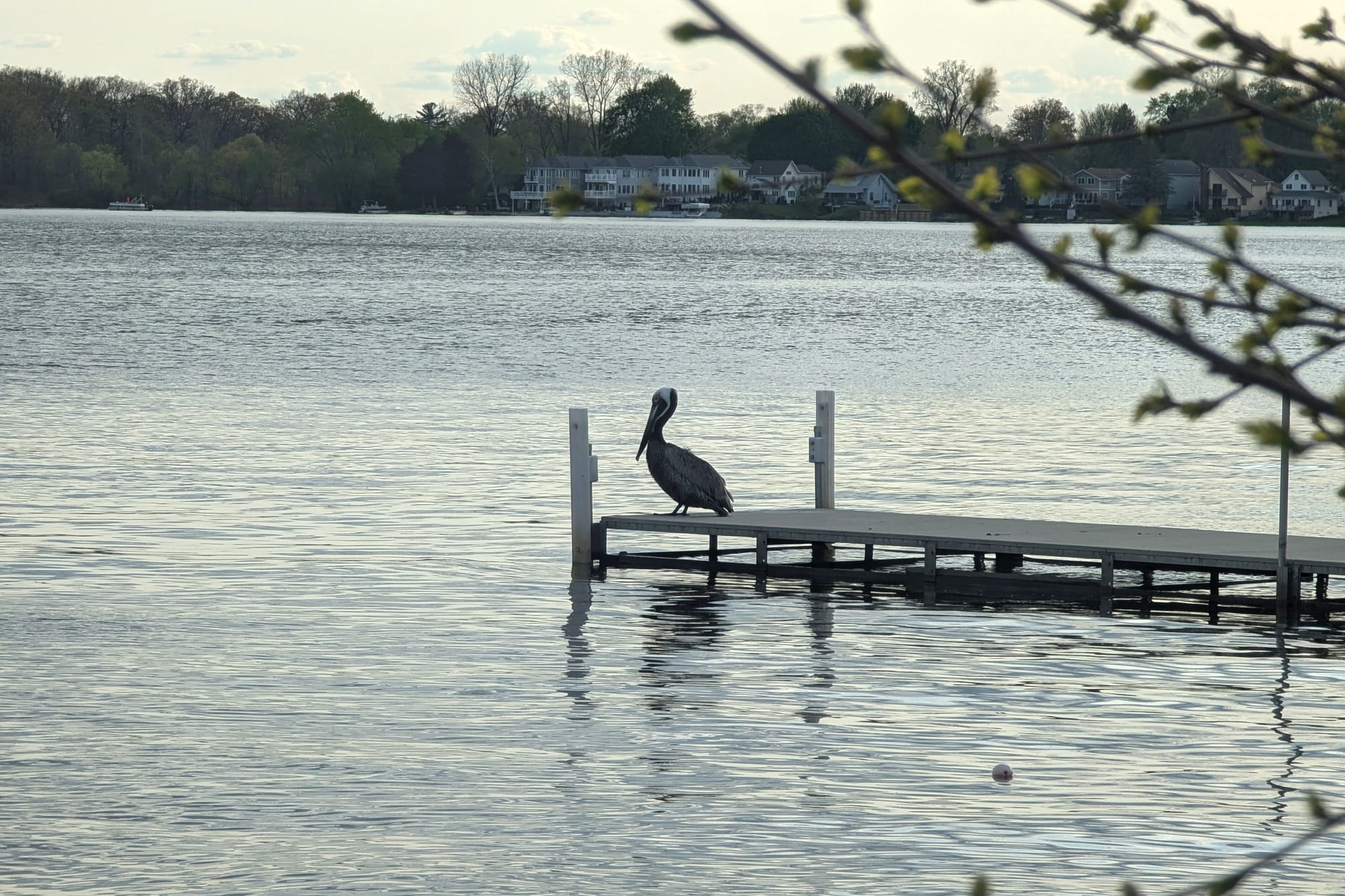
A through-the-scope shot and a phone shot of the Lake Lansing brown pelican
Anyway...
Watching...
BattleBots
The second Faceoffs comes as just the one video, which is nice. If you haven’t seen it, watch it above. Once you have, you can check out my fight notes below:
MadCatter v Roundhouse — MadCatter did characteristically very well here. Roundhouse is a new bot from the team behind grappler bot Deadlift, who were unable to get a win in this round of matches. Roundhouse isn’t a bad bot but it’s a rather generic undercutter with a pretty useless flamethrower attached to it. I wasn’t impressed much here.
Skorpios v Calypso — The other new bot is Calypso, which is a very wide-set undercutter. Being really wide and thus difficult to get around back of is, I think, an underexplored good idea in bot design. It’s been most effectively demonstrated in Huge, which has a lot of other things going on, and the only other wide bot I find worth mentioning is Hijinx, which has just general bot problems, so it’s hard to point to it as a good idea based on existing bots, but I think it’s worth pursuing nonetheless. Calypso comes from the team that brought us Horizon, aka Long RotatoЯ, and it feels like Horizon having been simplified into something more viable. Calypso lost soundly to both veteran bots but if Team Horizon sticks it out I think their new bot has some potential.
MadCatter v Calypso — I’m never sure what to make of MadCatter. It’s not one of the sport’s very top-tier bots but it’s a very solidly good bot that I’m never surprised to see take victory. They delivered the biggest blow of Faceoffs 2 when they broke away Calypso’s weapon in what turned out to be a kill shot to the whole bot. Their new driver seems to be right up to speed controlling the bot already.
Skorpios v Roundhouse — Skorpios did really well across their three matches. They didn’t deliver a lot of hits, but those they did all were quite well placed. In my mind Skorpios always sits in comparison with Sawblaze, being the other hammersaw in the top ranks of the sport, and I think these fights showed its focus on durability and precision versus Sawblaze’s scoop-and-shove approach that has kept either bot from feeling like a knock-off of the other.
Calypso v Roundhouse — The newbies faced off for third place, which Calypso took by “judge’s” decision (audience cheer pick). I think that, despite both bots being much the worse for wear, Calypso’s win was pretty definitive. I’m glad they got the win, since I think their bot has more potential, even if it’s not in a great place just yet.
Skorpios v MadCatter — This fight really demonstrated that Skorpios’s biggest weakness is its short reach. Against MadCatter, it often couldn’t hit the other bot because it can’t reach things at the end of its forks. I think if they had delivered more of the blows they tried to make, Skorpios would have won more definitively. I’d actually have given it to MadCatter based on aggression and control, which I think they had for most of the fight, but whatever, it was a very close match.
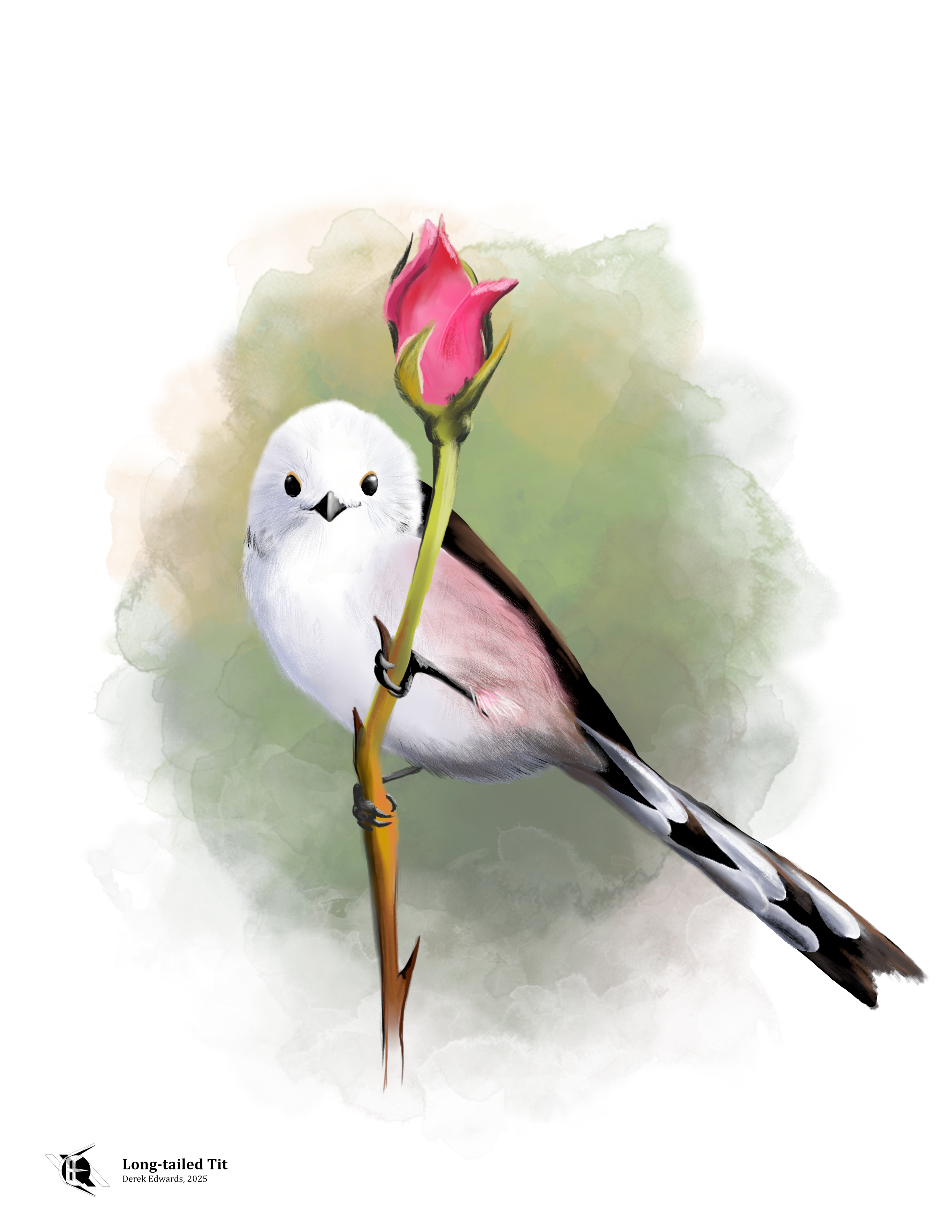
Bird of the Week
It’s been a while since I’ve drawn one of the tits, one of the active, vocal little birds that make up the family Paridae; the last one I drew was the tufted titmouse, and that was two-and-a-half years ago. And, as it turns out, that clock is still counting, since this bird, the Long-tailed Tit, is not actually a tit. It was originally considered to be, but modern ornithologists have split it off into another family, along with the dozen birds known as bushtits.1 Sometimes even this bird is called the long-tailed bushtit, though this name seems slow to catch on.
Actually, “bushtit” isn’t a great name for these birds, anyway, since I don’t know any marked preference they have for bushes versus the true tits. I suppose they do tend to look bushier.
In any case…while I drew this long-tailed tit as a Mothers’ Day, this bird would perhaps be more appropriate to feature for Babysitter’s Day — something which, looking it up, is in fact a defined holiday, and moreover is the day on which I am presently writing this, the day before Mother’s Day each year.* I say this bird is appropriate for Babysitter’s Day because it is among the birds known for its nest-helper behavior.
Long-tailed tit nests are remarkably vulnerable to predators, particularly other birds; a study of long-tailed tit nests in a valley in the United Kingdom found that only 17% of nests successfully produced fledglings. with most of the failed nests having fallen to predation by jays and magpies.2 If a long-tailed tit pair’s nest is destroyed, they generally will not try again. Rather, their own attempt spent, they will often join another, usually blood-related, couple and help them tend to their nestlings. The young tits who receive this extra care have been shown to have a higher survival rate than those raised in nests without helpers.3 It is unclear exactly why long-tailed tits and some other bushtits will work this way to aid the offspring of others. Statistically, birds who become “babysitters” after their broods fail are more likely to have their next season’s broods fail as well, compared to birds who do not help a nest after brood failure. 3 If I were to speculate, it could be that birds who are especially bad at caring for their own nests are somewhat self-aware of their deficiencies and are more likely to try to help the next generation in other ways, but there's nothing scientific about this theory.
To science, the long-tailed tit is Aegithalos caudatus. The species name comes from Carolus Linnaeus (who developed the Latin names used for all living things) and means “tailed”; Linnaeus called it Parus caudatus, having placed all tits and titmice and chickadees and bushtits and even the bearded reedling in one big genus whose name comes from the Latin name for such birds. Later on, the French naturalist Johann Hermann (who has a very German name for a Frenchman, on account of being from the Alsace region that France and Germany have historically argued over) spun it off into its own genus, which it now shares with some cousins discovered since in Asia. Hermann called the genus Aegithalos, but he was not the first scientist to give it this name; this was Aristotle’s generic name for long-tailed, great, and blue tits.4 The bird is found throughout Eurasia, and is broken down into, at present, 17 subspecies, each generally distinguishable by dark marks on their heads; I’ve drawn the all-white-headed nominate subspecies, A. c. caudatus, which is the type found in Linnaeus’s native Sweden.
*Babysitter’s Day is not an official legal holiday, and was first declared by babysitter training provider Safety Ways in 2003. https://nationaltoday.com/national-babysitter-day/
- Harrap, Simon. “Long-tailed Tit (Aegithalos Caudatus).” Birds of the World, March 4, 2020. https://doi.org/10.2173/bow.lottit1.01.
- Hatchwell, B. J., A. F. Russell, and M. K. Fowlie and D. J. Ross. “Reproductive Success and Nest-Site Selection in a Cooperative Breeder: Effect of Experience and a Direct Benefit of Helping.” The Auk 116, no. 2 (1999): 355–63. https://doi.org/10.2307/4089370
- McGowan, Andrew, Ben J. Hatchwell, and Richard J. W. Woodburn. “The Effect of Helping Behaviour on the Survival of Juvenile and Adult Long‐tailed Tits Aegithalos Caudatus.” Journal of Animal Ecology 72, no. 3 (April 17, 2003): 491–99. https://doi.org/10.1046/j.1365-2656.2003.00719.x.
- Jobling, J. A. (editor). The Key to Scientific Names in Birds of the World (S. M. Billerman et al. editors), Cornell Laboratory of Ornithology, Ithaca.
Curation Links
The Alabama Landline That Keeps Ringing | Emily McCrary, Oxford American
“I spent the better part of two days and nights listening to students answer questions at the Foy desk, where phones have been ringing since 1953, when James E. Foy, Auburn’s then dean of students, opened the line as a resource for students and then as a service to the public. For just as long, students who sit there have been answering any question asked of them—or at least tried their best.”
The hardest working font in Manhattan | Marcin Wichary, Aresluna
A history of the Gorton font, first developed for and still widely used in engraved text. Unlike many fonts, which were developed for print, Gorton was developed for machining and as such exists a bit outside the usual typeface ecosystem. Wichary finds it used, unrecognized, nearly everywhere once he stops to look.
We should use this amazing mechanism that's inside a grasshopper leg | Steve Mould
[VIDEO] Grasshopper legs are a bit different than our own, hence they can jump so much higher than we can. Here, Mould models and demonstrates the mechanism, along with some others from various creatures’ anatomy. (20 minutes)
I Can Feel Your Human Fingers | A. Kendra Greene, Nautilus
[FICTION] “This was an adorable child, hair in pigtails, who knew how to smile for the camera and at the same time speak through bared teeth. The kid, clearly adored, clearly the center of not just this tableau, spoke in the hiss of a whisper that would not reach the camera. I can feel your human fingers. As if blackmail might come next. The chipmunk said nothing—Joanna said nothing—but perhaps in this moment froze, and not just for the sake of the shutter.”
See the full archive of curations on Notion

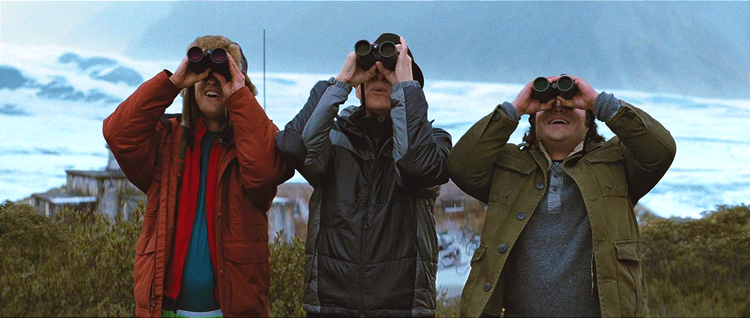
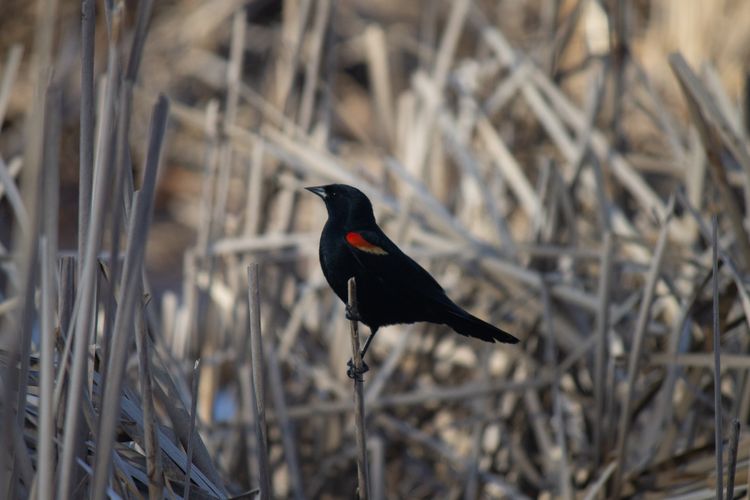
Member Commentary